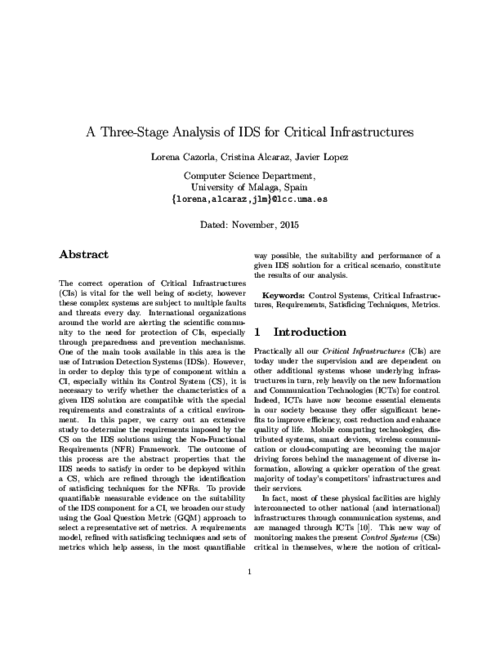| Title | A Three-Stage Analysis of IDS for Critical Infrastructures |
| Publication Type | Journal Article |
| Year of Publication | 2015 |
| Authors | L. Cazorla, C. Alcaraz, and J. Lopez |
| Journal | Computers & Security |
| Volume | 55 |
| Number | November |
| Pagination | 235-250 |
| Publisher | Elsevier |
| ISSN Number | 0167-4048 |
| Abstract | The correct operation of Critical Infrastructures (CIs) is vital for the well being of society, however these complex systems are subject to multiple faults and threats every day. International organizations around the world are alerting the scientific community to the need for protection of CIs, especially through preparedness and prevention mechanisms. One of the main tools available in this area is the use of Intrusion Detection Systems (IDSs). However, in order to deploy this type of component within a CI, especially within its Control System (CS), it is necessary to verify whether the characteristics of a given IDS solution are compatible with the special requirements and constraints of a critical environment. In this paper, we carry out an extensive study to determine the requirements imposed by the CS on the IDS solutions using the Non-Functional Requirements (NFR) Framework. The outcome of this process are the abstract properties that the IDS needs to satisfy in order to be deployed within a CS, which are refined through the identification of satisficing techniques for the NFRs. To provide quantifiable measurable evidence on the suitability of the IDS component for a CI, we broaden our study using the Goal Question Metric (GQM) approach to select a representative set of metrics. A requirements model, refined with satisficing techniques and sets of metrics which help assess, in the most quantifiable way possible, the suitability and performance of a given IDS solution for a critical scenario, constitutes the results of our analysis. |
| Citation Key | lorena2015c |
A Three-Stage Analysis of IDS for Critical Infrastructures
Paper File:
https://nics.uma.es:8082/sites/default/files/papers/lorena2015c.pdf
